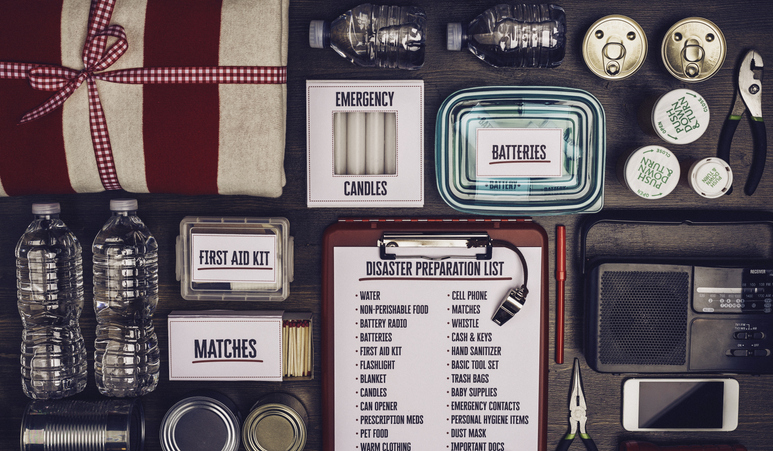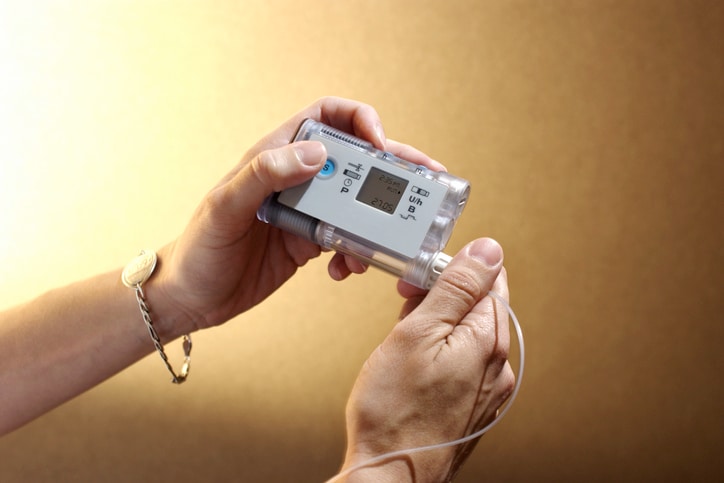Diabetes Care During Emergencies

Being prepared will help make managing your diabetes easier during an emergency.
Managing diabetes can be hard during a major storm, loss of electricity, or infectious disease outbreaks. Plan ahead so that you can manage your diabetes during times of emergency.
Natural disasters, disease outbreaks, and other emergencies can happen at any moment. They may cause widespread and long-lasting impacts on supplies, services, and health care systems. Emergencies can be stressful because we often feel things are out of our control. Planning ahead can help.
Having essential supplies, prescriptions, important paperwork, and practical skills will help you during an emergency. People with diabetes should also be prepared to manage their condition during any kind of emergency, whether they have to shelter in place, evacuate, or protect themselves from an infectious disease.
Create a Diabetes Care Kit
Planning is an important part of being prepared for an emergency. In addition to having basic emergency supplies, people with diabetes should also put together a diabetes care kit. Keep the kit in an easy-to-carry waterproof bag or storage container so you can move quickly if you have to evacuate. View a printable checklist of the supplies [PDF – 501 KB].
Put your medical information in a sealed plastic bag, including:
- Copies of any prescriptions, including eye health prescriptions.
- Current dosages and times when you take medicines.
- Your basal rates, insulin-to-carbohydrate ratio, insulin sensitivity factor, blood sugar target, and correction factors for insulin pumps.
- Your pharmacy and doctor’s name, address, and phone number.
- The make, model, and serial number of your insulin pump or continuous glucose monitor.
- A copy of your photo ID and health insurance card.
Pack enough diabetes supplies to last at least 1 to 2 weeks, including:
- Insulin and syringes for every injection. Learn more about insulin storage.
- Blood sugar (glucose) meter.
- Extra batteries for your blood sugar meter and insulin pump.
- Lancets and lancing devices.
- Insulin pump supplies, including extra pump sets and insertion devices.
- Glucagon kits.
- Ketone strips.
- Alcohol wipes.
- Glucose tablets or 15 grams of quick carbs (such as juice, hard candy, or honey) to treat low blood sugar.
- Oral diabetes medicine.
- An empty plastic bottle or sharps container to safely carry syringes, needles, and lancets.
Be sure to store your supplies properly according to the manufacturer’s instructions. Also check the expiration dates for your supplies every few months. Anything that’s close to expiring, replace with fresh supplies. You can use the supplies that were in the kit for your daily care before they reach the expiration date.

Wearing a medical ID, usually a bracelet or necklace, can keep you safe and healthy if you can’t speak for yourself. Emergency medical technicians are trained to look for a medical ID when caring for someone who can’t speak for themselves.
Remember Your Other Health Concerns
Know What to Do If You Can’t Get Dialysis
Emergencies may also affect your care for other health conditions. If you’re on dialysis for chronic kidney disease, getting dialysis treatment may not be possible, especially if the power is out or roads are closed. Find potentially life-saving tips if you can’t get dialysis treatment, including the 3-Day Emergency Diet.
Take Care of Your Mental Health
Disasters and emergencies can take a toll on your health. Don’t forget to take care of your emotional health during an emergency, so that you can help yourself and your family. If you’re able to, connect with family, friends, and your community to take care of each other. Children will also have strong emotions during and after an emergency. Learn how you can help children cope with emergencies.
Find a Shelter That Meets Your Needs
If you have to go to a shelter during an emergency, look for one that can meet your medical needs. Do you:
- Have a home health nurse?
- Use a walker?
- Use oxygen?
- Need assistance to go to the bathroom?
- Require wound care or medicine through an IV?
If you answered “yes” to any of these questions, then it’s likely you should find a special medical needs shelter.
When you get to the shelter, tell the people in charge about your diabetes and any other conditions, such as being on dialysis. They can help you with medical care and insulin storage.
- CDC’s Natural Disaster and Severe Weather Information
- Diabetes Emergency Preparedness
- Managing Insulin in an Emergency
- Insulin Storage and Switching Between Products in an Emergency
- Shelter in Place
- Disaster Relief for People With Diabetes
- Disaster Financial Assistance
- CDC Diabetes on Facebook
- @CDCDiabetes on Twitter